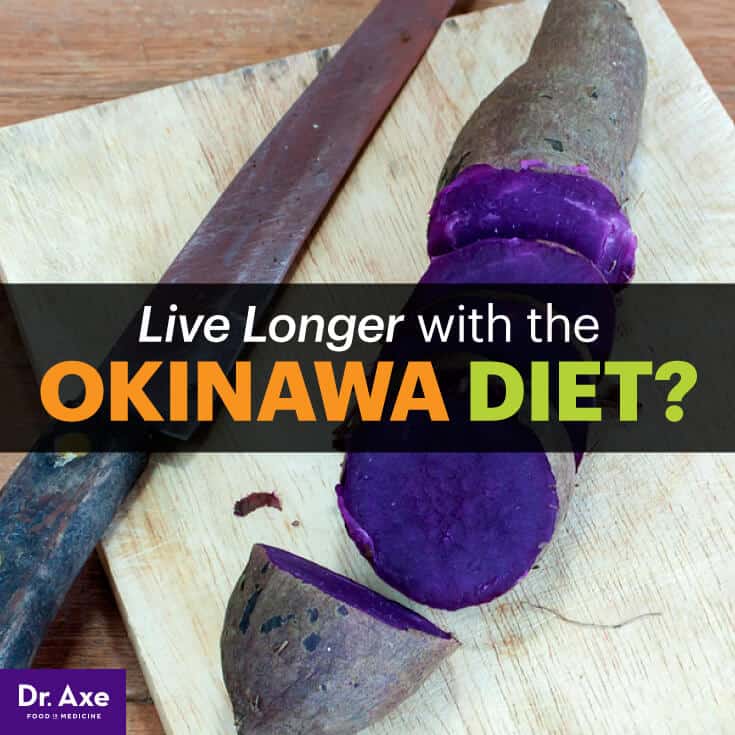This Dr. Axe content is medically reviewed or fact checked to ensure factually accurate information.
With strict editorial sourcing guidelines, we only link to academic research institutions, reputable media sites and, when research is available, medically peer-reviewed studies. Note that the numbers in parentheses (1, 2, etc.) are clickable links to these studies.
The information in our articles is NOT intended to replace a one-on-one relationship with a qualified health care professional and is not intended as medical advice.
This article is based on scientific evidence, written by experts and fact checked by our trained editorial staff. Note that the numbers in parentheses (1, 2, etc.) are clickable links to medically peer-reviewed studies.
Our team includes licensed nutritionists and dietitians, certified health education specialists, as well as certified strength and conditioning specialists, personal trainers and corrective exercise specialists. Our team aims to be not only thorough with its research, but also objective and unbiased.
The information in our articles is NOT intended to replace a one-on-one relationship with a qualified health care professional and is not intended as medical advice.
The Okinawa Diet: Foods and Habits that Boost Longevity
August 15, 2016

Between the Mediterranean diet, ketogenic diet and a host of other diet plans to lose weight, there’s no shortage of suggested ways to eat. But there’s one diet that modern researchers keep coming back to when they study health and longevity: the Okinawa diet.
What Is the Okinawa Diet?
The Okinawa diet is named after the largest island in the Ryukyu Islands in Japan. History buffs might recognize the name from the Battle of Okinawa, fought during World War II. But these days, there’s another reason it’s in history books: Okinawa’s people live a really, really long time.
While the average life expectancy in the United States is 78.8 years, it’s 84 years old in Japan – and five times as many people from Okinawa live to be 100 years as their peers in the rest of the country. (1, 2, 3) Researchers have studied the Okinawa’s residents for years, and the answer lies both in the typical Okinawan diet and the islands’ attitude toward eating.
The Okinawa diet gets back to basics. It emphasizes a diet rich in yellow, orange and green vegetables. While rice is ubiquitous with mealtime in Japan, they skimp on the grains and focus instead on the purple potato. Meat (including pork), dairy and seafood are eaten in small amounts, and there’s an emphasis on soy and legumes. It’s very similar to a macrobiotic diet, though that diet is only plant-based.
The entire diet is quite low in sugar and grains – Okinawans consume about 30 percent less sugar and 15 percent fewer grains than folks in the rest of Japan. (4)
Hara Hachi Bu — the Key to Not Overeating
You can’t talk about the Okinawan diet without mentioning hara hachi bu. Hara hachi bu is based on a Confucian teaching that reminds them to stop eating when they are 80 percent full. In English, the phrase translates to “eat until you are eight parts out of ten full.”
Eating mindfully and slowly in this way means that Okinawans take the time to think about what and how they’re consuming their food. By checking in with themselves to decide if they have achieved satiety before continuing to eat, they give their bellies time to signal the brain and let them know they’re full.
This strategy pays off. Okinawans typically eat about 1,200 calories a day, a lot fewer than the average 2,000 recommended in the U.S. But because the foods they consume are so nutrient-rich and Okinawans are used to caloric restriction (not starvation mode!), they’re able to stay healthy and live longer on less. (5, 6)
How to Eat the Okinawan Way
So you want to live to 100 years old? It might be time to incorporate the Okinawan way of eating and its staple foods into your diet.
1. Pile on colorful foods
Eating a variety of fruits and veggies is good for us no matter what they are. But how often do you mix up what’s on your plate? Instead of sticking to a handful of vegetables, Okinawans spice things up by eating a variety, especially brightly colored one. It’s no surprise, then, that their diet is loaded with antioxidants and nutrients.
In particular, orange and yellow fruits and vegetables are bursting with carotenoids. These nutrients lower inflammation, boost growth and development, and can improve immune system function, all critical parts of staying healthy as we age.
If you’re not sure how to get more variety into your diet, one great way to incorporate new-to-you vegetables is by visiting your local farmers market. You’ll be able to find fresh, in-season produce you might not regularly purchase, and farmers are usually happy to share their tips on how best to prepare them.
2. Stick to a limited amount of high-quality meats and seafood
Though the Okinawa diet does allow for meat and seafood, it does so in small, limited quantities. Barring festivals or special occasions, stick to a mostly plant-based diet.
You can replicate this at home by eating high-quality meats and seafood, like grass-fed beef, bison meat and wild-caught seafood like salmon. If you stick to just seafood, you’d be eating a pescatarian diet. Enjoying these foods just a few times a week or on special occasions means you’ll enjoy the benefits of healthy fats, like reducing inflammation, controlling cholesterol and reducing your risk for heart disease, while keeping calories in check. (7)
Additionally, reducing your family’s meat and seafood intake lessens the load on your wallet, making products that might normally be a stretch more budget-friendly.
3. Limit grains and dairy
We can’t ignore the fact that the Okinawa diet has nearly no dairy or grains in it. Gluten, which is found in grains, is a danger food that’s found in wheat-based products. The wheat we buy today contains nearly double the amount of gluten as grains of the past.
Too much gluten can cause digestive problems, inflammation, leaky gut and allergic reactions. Even people who think they can tolerate gluten often find that when they reduce or eliminate the protein from their diets, their health and seemingly unrelated problems, like acne or bloating, are reduced.
Okinawans – and most Asian cultures – consume very little dairy. I must admit, I do love a little natural goat’s cheese on my salad. But much of the dairy products that are sold in supermarkets do little for our bodies, particularly reduced-fat versions.
I’ve outlined the dangers of low-fat dairy before, including the fact that it’s often full of sugar and the pasteurization process kills a lot of the beneficial nutrients and vitamins. I recommend choosing raw milk and raw dairy products when possible. Plant-based alternatives, like coconut or almond milks, are also a great option.
Final Thoughts
While the Okinawan diet is certainly healthy, some of the nutritional choices don’t “translate” well in America. For instance, soy makes up a hefty portion of this Japanese way of eating. The probiotic-rich miso is soy-based and loaded with nutrients.
Unfortunately, the soy that’s sold in the U.S. is mainly the soy to avoid. Ninety percent of the soy that’s available in the States is genetically modified. Aside from the fact that they kill healthy bacteria in your gut, we still don’t know the long-term effects of GMO foods.
Additionally, U.S. soy is full of phytoestrogens, which mimic the hormone estrogen in your body. Too much estrogen has been linked to certain types of breast cancer, cervical cancer and other hormone-related disorders. So while the Okinawan people have access to healthier soy like natto (which is fermented), I’d advise you to steer clear of regular soy.
Pork also has its place in the Okinawan diet. While it’s not eaten super often, it is a part of staple Okinawan dishes, particularly around holidays and festivals. Okinawans are famed for using nearly every part of the pig in their cooking. Unfortunately, there are plenty of reasons why you should avoid pork, from the amount of parasites the meat carries to the other toxins found in it.
Finally, as the Western diet of processed and fast foods reaches Okinawa’s shores, the health repercussions are already visible, with the current younger suffering from obesity. (8) As Okinawans struggle to stick to their own diet, obesity-related diseases are taking their toll.
The Okinawan diet isn’t a magic cure, but taking some cues from island’s eating habits — particularly eating a variety of produce, sticking to quality meats over quantity and reducing grains and dairy — are sure to have a positive impact on your health. Hopefully, the Okinawans are able to do the same.













